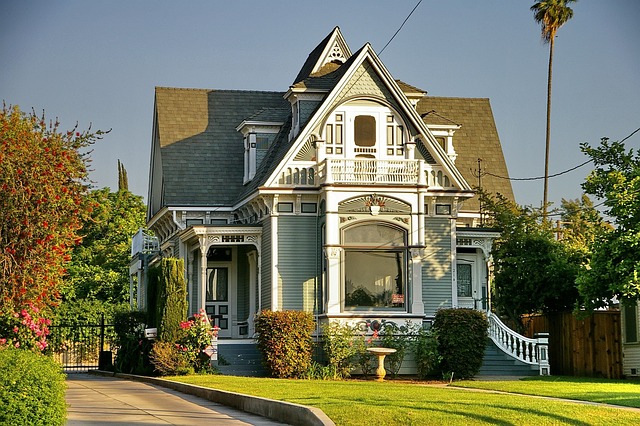
Related Articles:
Maximizing Space and Comfort in Your Tiny House: Tips and Tricks
Homes for rent: Homes for rent in Massachusetts
Homes for sale: Homes for sale in Massachusetts
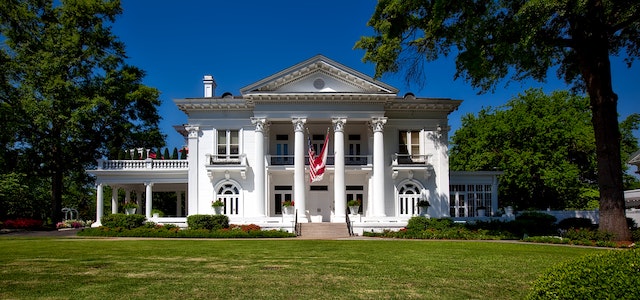
Different structural types of houses explained
There are many different types of houses that can be found around the world, each with its own unique characteristics and features. Some common structural types of houses include:
Single-family detached houses:
These are standalone houses that are not attached to any other structures. They are typically the most common type of house in suburban areas and offer a high level of privacy and independence.
Single-family detached houses may be owned by individual homeowners or by a management company, and may be managed by a property manager. They may range in size from small studios to large, multi-bedroom houses and may include amenities such as yards, garages, and outdoor space.
One of the main benefits of living in a single-family detached house is the privacy and independence it offers. Single-family detached houses do not have shared walls with neighbors and offer more space and privacy than other types of housing, such as apartments or townhouses.
Single-family detached houses can also be a good option for families with children, as they often have yards and outdoor space that can be used for play. They may also be located in neighborhoods with good schools and other amenities.
There are some challenges to living in a single-family detached house, however. They may be more expensive to purchase and maintain than other types of housing, and they may be located further from urban amenities and public transportation.
Overall, single-family detached houses are a popular and private housing option, particularly in suburban areas. They offer many benefits, including privacy, independence, and outdoor space.

Duplexes:
A duplex is a building that contains two separate units, each with its own entrance, kitchen, and bathroom. Duplexes are often found in urban areas and are a popular choice for homeowners who want to live in one unit and rent out the other.
Duplexes may be owned by individual homeowners or by a management company, and may be managed by a property manager. They may range in size from small studios to multi-bedroom units and may include amenities such as laundry facilities and outdoor space.
One of the main benefits of living in a duplex is the potential for rental income. Duplexes offer the opportunity for homeowners to generate additional income by renting out one of the units.
Duplexes can also be a more affordable housing option, particularly in areas with high real estate prices. They may also offer access to urban amenities and public transportation.
There are some challenges to living in a duplex, however. There may be noise and privacy issues if the units are not well-insulated, and there may be conflicts over shared resources such as parking or outdoor space. Duplexes may also have stricter rules regarding pets and noise levels.
However, with some planning and working with designers, you can upgrade the functionality and forget all about the lack of space. People nowadays order custom barn doors that they install in their apartments to save space and create a unique decoration element. This benefits them in a variety of ways, as barn doors can be used for different purposes. Another solution to save space is by using multipurpose furniture, such as a sofa bed or a coffee table with storage. This makes sure your home never looks cluttered and is always functional.
Overall, duplexes are a popular and affordable housing option, particularly in urban areas. They offer many benefits, including the potential for rental income and access to amenities and transportation.
Townhouses
Townhouses are houses that are attached to other houses in a row or block. They typically have shared walls with their neighbors and may have shared outdoor space, such as a courtyard or garden. Townhouses are often found in urban or suburban areas and offer a more affordable housing option than single-family detached houses.
Townhouses may be owned by individual homeowners or by a management company, and may be managed by a property manager. They may range in size from small studios to multi-bedroom units and may include amenities such as laundry facilities and outdoor space.
One of the main benefits of living in a townhouse is the sense of community that they can offer. Townhouses often have shared outdoor spaces that can be used for socializing and may also have common areas such as courtyards or gardens.
Townhouses can also be a more affordable housing option, particularly in areas with high real estate prices. They may also offer access to urban amenities and public transportation.
There are some challenges to living in a townhouse, however. They may have shared walls with neighbors, which can lead to noise and privacy issues. Townhouses may also have stricter rules regarding pets and noise levels.
Overall, townhouses are a popular and affordable housing option, particularly in urban and suburban areas. They offer many benefits, including a sense of community and access to amenities and transportation.
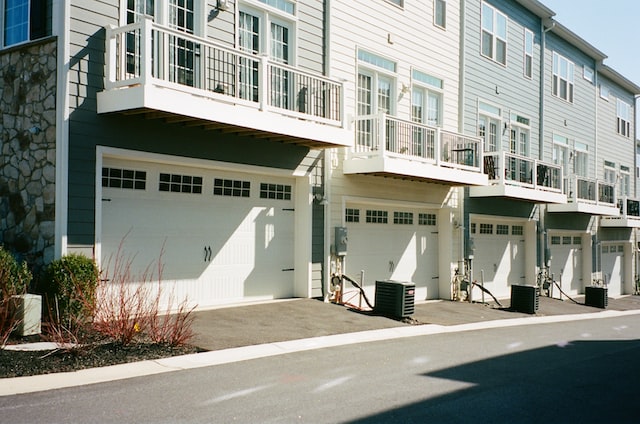
Apartments
Apartments are multi-unit buildings that contain individual units for rent. They are typically found in urban areas and range in size from small studios to large, multi-bedroom units.
Apartments may be owned by individual landlords or by larger management companies, and are often managed by a property manager. They may be furnished or unfurnished and may include amenities such as laundry facilities, pools, and fitness centers.
One of the main benefits of living in an apartment is the convenience of having maintenance and repairs taken care of by the landlord or management company. Apartments also offer a more flexible living arrangement, as they can be rented on a month-to-month basis and do not require a long-term commitment.
Apartments can also be a more affordable housing option, particularly in areas with high real estate prices. They may also offer access to urban amenities and public transportation.
There are some challenges to living in an apartment, however. They may be smaller and have less privacy than houses, and there may be noise from neighbors. Apartments may also have stricter rules regarding pets and noise levels.
Overall, apartments are a popular and convenient housing option, particularly in urban areas. They offer many benefits, including maintenance and repair services, flexibility, and affordability.
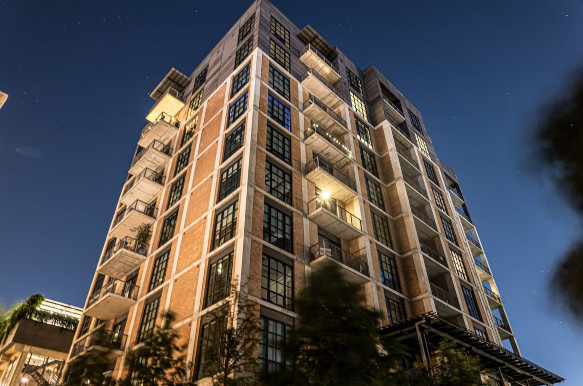
Manufactured houses
Manufactured houses, also known as mobile homes, are houses that are built in a factory and then transported to their final location. They are typically less expensive than traditional houses and can be found in both urban and rural areas.
One of the main benefits of manufactured houses is their affordability. They are typically less expensive to build and maintain than traditional houses, and can be a good option for those who want to own a home but cannot afford a traditional house.
Manufactured houses may also be a good option for those who want the flexibility to move to a new location. They can be easily transported to a new site and may be placed on a permanent foundation or on wheels.
There are some challenges to living in a manufactured house, however. They may not appreciate in value as much as traditional houses, and they may be difficult to insure or finance. They may also be subject to stricter zoning regulations in some areas.
Overall, manufactured houses are a less expensive and flexible housing option that offer many benefits, including affordability and portability.
Tiny houses
Tiny houses are small, portable houses that are typically less than 500 square feet in size. They are designed to be energy-efficient and have a minimalist lifestyle. Tiny houses can be found in a variety of locations, including urban areas, rural areas, and even in the backyards of larger houses.
Tiny houses are often built on wheels and can be easily moved to a new location. They may be built using a variety of materials, such as wood, metal, or recycled materials, and may be designed to be off-grid, with features such as solar panels and composting toilets.
One of the main benefits of tiny houses is their affordability. They are typically less expensive to build and maintain than traditional houses, and can be a good option for those who want to live simply and minimize their expenses.
Tiny houses can also be a sustainable housing option, as they use fewer resources and generate less waste than larger houses. They may also be a good choice for those who want to live in a more environmentally friendly way.
There are some challenges to living in a tiny house, however. They can be difficult to insure and may not be allowed in all areas, and they may not have enough space for all of a person's belongings.
Overall, tiny houses are a unique and affordable housing option that offer many benefits, including affordability, sustainability, and portability.
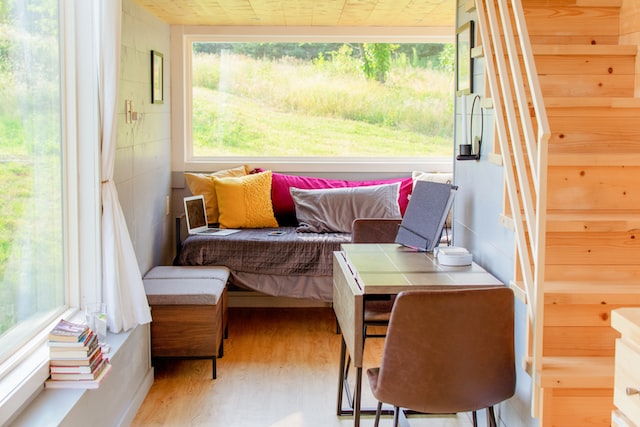
Earthships
Earthships are houses that are built using natural and recycled materials and are designed to be self-sustaining and energy-efficient. They often use natural ventilation and passive solar heating and are typically found in rural areas.
Earthships are designed to be environmentally friendly and use materials such as recycled tires, bottles, and cans in their construction. They may also use solar panels, wind turbines, and other renewable energy sources to generate electricity and heat.
One of the main benefits of Earthships is their self-sustaining nature. They are designed to be able to provide their own food, water, and energy, and may include features such as greenhouses, rainwater collection systems, and composting toilets.
Earthships are also often designed to be energy-efficient and may use passive solar heating and natural ventilation to reduce their reliance on mechanical systems. They may also use insulation and other energy-saving techniques to reduce their energy consumption.
Overall, Earthships offer an alternative to traditional housing models and are a sustainable and energy-efficient choice for those who want to live in a more environmentally friendly way.
Container houses
Container houses are houses that are made from shipping containers and are often designed to be modular and portable. They are a popular choice for those who want an affordable and sustainable housing option.
Shipping containers are typically made of steel and are designed to be durable and weather-resistant. They are often used to transport goods by ship, train, or truck, and are readily available in many parts of the world.
Container houses can be built in a variety of sizes and configurations, from small studios to multi-bedroom houses. They can be used as standalone houses or can be stacked to create multi-story buildings. Container houses can also be easily modified to include windows, doors, and other features.
One of the main benefits of container houses is their affordability. Shipping containers are typically less expensive than traditional building materials, and container houses can be built relatively quickly and easily. They are also a sustainable option, as they repurpose materials that would otherwise be discarded.
Another advantage of container houses is their portability. Container houses can be built on wheels or on a foundation, and can be easily moved to a new location if desired. This makes them a good option for those who want the flexibility to change their living situation.
Container houses are a unique and affordable housing option that offer many benefits, including affordability, sustainability, and portability.
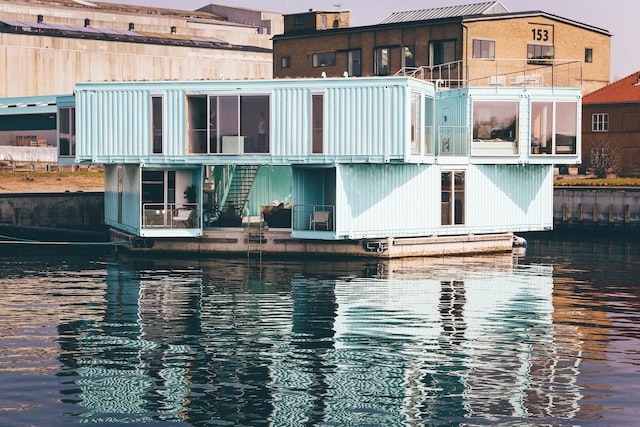
Co-housing communities
Co-housing communities are intentional communities in which residents live in separate units but share common spaces and resources. They are designed to foster a sense of community and are often found in urban or suburban areas.
Co-housing communities typically consist of a group of privately owned units that are arranged around a shared outdoor space, such as a courtyard or garden. The units may be houses, apartments, or townhouses, and may range in size from small studios to multi-bedroom units.
Co-housing communities often have shared amenities, such as kitchens, laundry facilities, and common rooms, which residents can use. Some co-housing communities may also have shared resources, such as tools or equipment, that residents can borrow.
One of the main benefits of co-housing communities is the sense of community that they foster. Residents often participate in shared meals, events, and activities and may also work together on tasks such as gardening or maintenance.
Co-housing communities are also often designed to be environmentally friendly and may include features such as solar panels, rainwater collection systems, and energy-efficient appliances.
Overall, co-housing communities offer an alternative to traditional housing models and provide an opportunity for residents to live in a supportive and close-knit community.
Communal houses
Communal houses are houses in which residents share common living spaces, such as kitchens and bathrooms, and may also share meals and other resources. They are often found in urban areas and are a popular choice for those who want a more affordable housing option.
Communal houses are typically owned and operated by a group of individuals who live in the house and share the responsibilities of maintaining the property. They may be organized around a particular ideology or lifestyle, such as a religious or political belief, or may simply be a group of individuals who want to live in a more communal setting.
One of the main benefits of communal living is the lower cost of living. By sharing resources such as meals, appliances, and utilities, residents can save money on living expenses. Communal living can also foster a sense of community and provide support and social connections.
There are some challenges to communal living, however. It can require a high level of cooperation and communication among residents, and there may be conflicts over issues such as household chores and shared resources.
Overall, communal houses offer an alternative to traditional housing models and provide an opportunity for residents to live in a more affordable and supportive community.
Summary
Overall, there is a wide variety of structural types of houses to choose from, each with its own unique features and benefits. The type of house that is right for you will depend on your personal preferences, budget, and location.
Homes for rent: Homes for rent in Massachusetts
Homes for sale: Homes for sale in Massachusetts